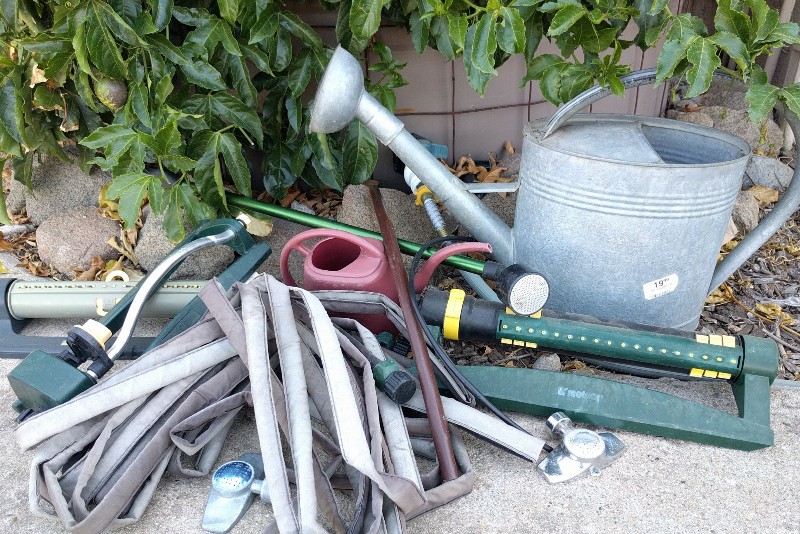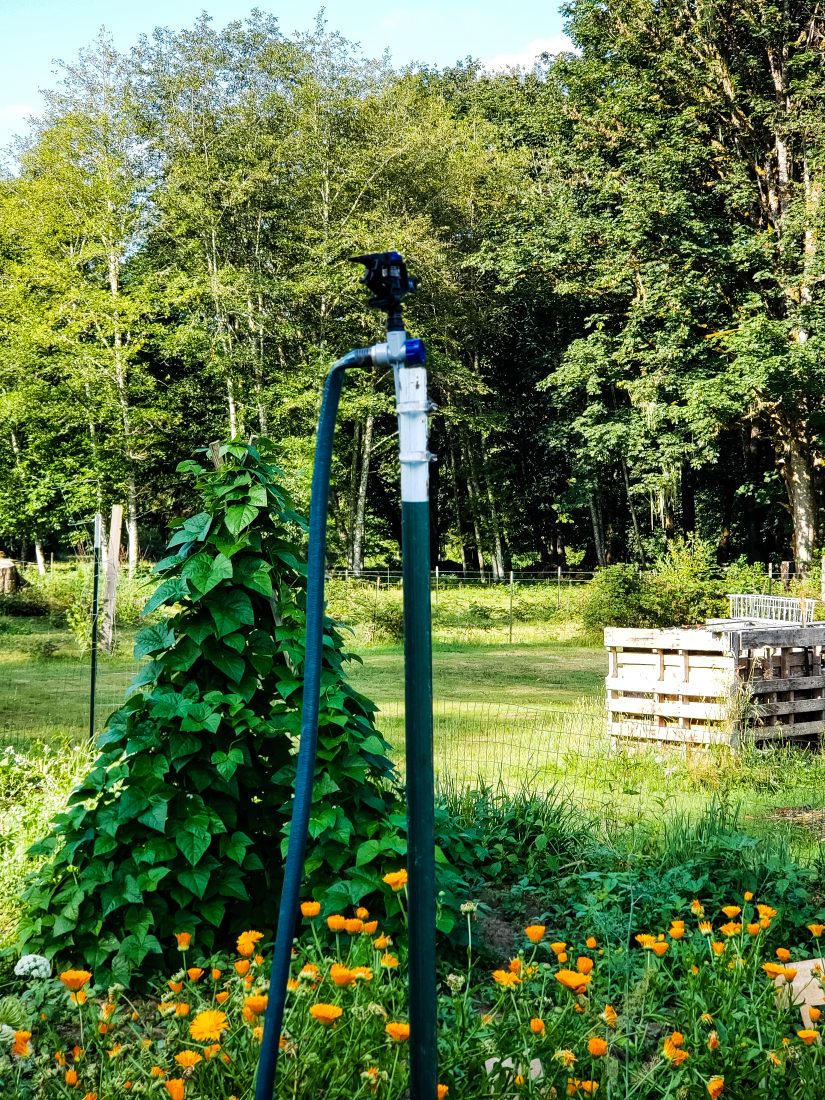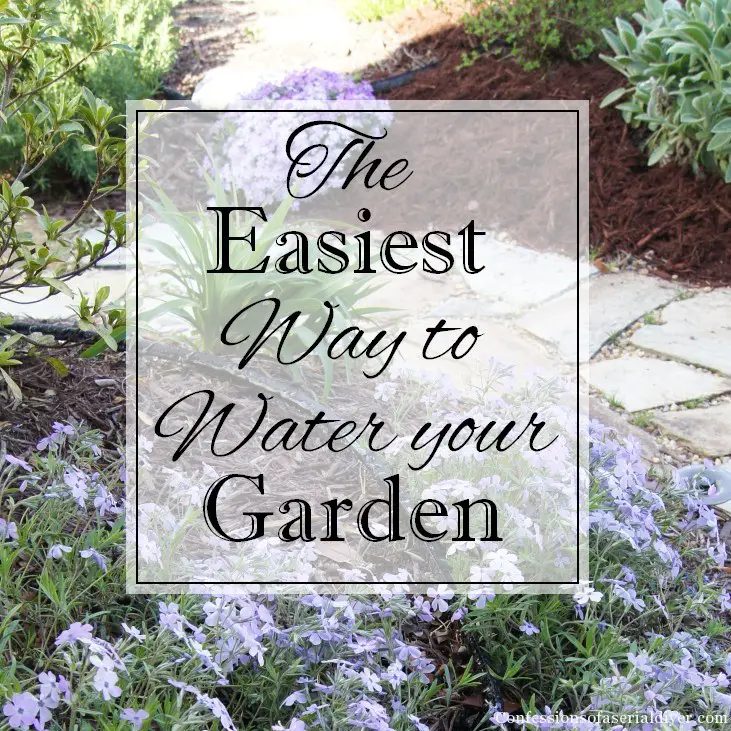Watering your garden the right way is key to keeping it healthy. It can be tricky to know the best methods.
A well-watered garden can thrive and bring beauty to your home. Many people struggle with how often and how much to water their plants. Understanding the best way to water your garden can save you time and effort. It also ensures your plants get the right amount of water.
Different plants have different needs, and the weather also plays a role. By learning some simple tips and tricks, you can make sure your garden flourishes. Proper watering helps plants grow strong roots, resist disease, and produce more flowers or vegetables. Ready to learn more? Let’s dive into the best ways to water your garden!

Credit: www.youtube.com
Choosing The Right Time
The best time to water your garden is early morning. The soil absorbs the water better. Plants stay hydrated all day. Watering in the evening can lead to wet leaves. This might cause disease. Morning watering is healthier for plants. It also saves water. Less evaporation happens in the morning. Your garden will thrive with this routine.
Seasons affect watering needs. In summer, plants need more water. The heat dries out the soil fast. Check soil moisture often. In winter, reduce watering. Plants are dormant. They need less water. Always adjust to the season. This ensures a healthy garden. Keep an eye on your plants. They will tell you what they need.

Credit: gregalder.com
Watering Methods
Hand watering is a simple method. You use a hose or a watering can. It allows you to control the water flow. Plants get the exact amount they need. You can check each plant. Ensure no overwatering. It is perfect for small gardens.
Sprinkler systems cover large areas easily. They spray water over the garden. Set a timer for automatic watering. Adjust the spray pattern. This helps with even water distribution. Save time and effort with this method. It is ideal for medium to large gardens.
Drip Irrigation Benefits
Drip irrigation is the best way to water a garden. It delivers water directly to plant roots, saving time and reducing water waste. This method promotes healthier plants and more efficient gardening.
Efficiency
Drip irrigation saves water by delivering it directly to plants. This method reduces water waste. It also minimizes evaporation. Plants get just the right amount of water. This promotes healthier growth. Drip irrigation is great for conserving resources.
Installation Tips
Start by planning your garden layout. Measure the area you need to water. Choose quality drip lines and emitters. Install a filter to keep the system clean. Use stakes to keep the lines in place. Test the system to ensure proper flow. Check for leaks and adjust as needed. Regular maintenance keeps the system efficient.
Soil Moisture Levels
Good soil moisture is key. Use a moisture meter to check. Stick it in the soil. Read the number. Another way is the finger test. Push a finger into the soil. Is it wet? The soil is moist. Is it dry? Time to water. Plants need different amounts of water. Watch your plants. Learn their needs.
Water in the morning. Less water lost to evaporation. Water at the base of plants. Keep leaves dry. Wet leaves can get sick. Use a soaker hose. Less water wasted. More water for roots. Water deeply. Shallow watering doesn’t help. Check soil moisture often. Adjust watering as needed. Healthy plants need the right amount of water.
Plant-specific Needs
Different plants have unique watering needs. Tailor your approach to suit each plant type. This ensures healthier growth and vibrant gardens.
Vegetables
Vegetables need a lot of water, especially in hot weather. Water them deeply but not too often. This helps roots grow strong. Early morning is the best time. It keeps leaves dry and prevents disease. Use a soaker hose or drip irrigation. It saves water and targets roots directly.
Flowers
Flowers need different care. Some like dry soil, others need more water. Check the soil before watering. If the soil is dry, then it’s time to water. Water in the morning or evening. This avoids midday heat. Use a watering can for delicate flowers. A gentle spray keeps petals safe.

Credit: melissaknorris.com
Water Conservation Tips
Mulching helps keep soil moist. It reduces the need for frequent watering. Use organic mulch like straw or leaves. This also helps control weeds. Mulch keeps the soil cool in summer. It also warms the soil in winter. Add a layer of mulch around plants. This will help your garden thrive.
Collecting rainwater is a great way to save water. Use a rain barrel to catch water from your roof. This water can be used for your garden. It is also free and eco-friendly. Make sure the barrel is clean. Use the collected water within a week. Rainwater is usually better for plants. It does not contain chemicals like tap water.
Avoiding Common Mistakes
Watering your garden early in the morning prevents evaporation. Avoid watering at night to reduce the risk of fungal diseases.
Overwatering
Too much water can harm plants. Roots need air to breathe. Overwatering fills the soil with water. This leaves no space for air. Plants may look weak and yellow. Wet soil invites pests and diseases. Always check soil before watering.
Underwatering
Too little water is also bad for plants. Dry soil makes it hard for roots to take up nutrients. Plants may wilt and turn brown. Water deeply but not too often. The soil should be moist, not dry or soggy. Learn the needs of each plant. Some plants need more water than others.
Tools And Equipment
Hoses come in many sizes and lengths. Choose a hose that is durable. Nozzles help control water flow. Some nozzles can spray water gently. Others can spray with more force. Pick a nozzle that fits your needs. Good hoses and nozzles make watering easy.
Smart watering systems use technology. They can water your garden on a schedule. Some systems even check the weather. They only water when needed. This saves water and helps plants. Smart systems can be controlled by your phone. They make gardening easier.
Frequently Asked Questions
How Often Should You Water Your Garden?
Water your garden 2-3 times a week. Adjust based on weather and soil conditions.
What Is The Best Time To Water A Garden?
Early morning is the best time to water. This reduces evaporation and fungal growth.
How Much Water Does A Garden Need?
Most gardens need about 1 inch of water per week. Adjust based on plant needs.
Should You Water Plants From Above Or Below?
Water at the base of plants. This prevents leaf diseases and ensures roots get enough water.
Conclusion
Watering your garden the right way ensures healthy plants. Use these tips for efficient watering. Water early in the morning to minimize evaporation. Deep watering encourages strong root growth. Avoid overwatering to prevent root rot. Use a soaker hose or drip system for consistent moisture.
Mulch helps retain soil moisture and reduces weeds. Observe your plants and adjust watering as needed. With these strategies, your garden will thrive and flourish, giving you beautiful, vibrant plants to enjoy. Happy gardening!

My mission is to help you bring the beauty of nature indoors with expert advice, detailed plant care guides, and creative design ideas.





Leave a Reply